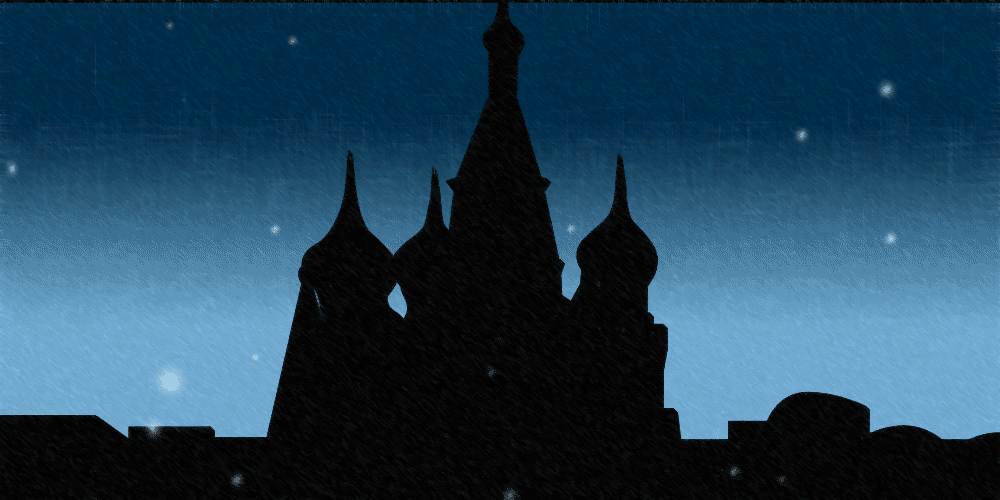In 1951, Susanna Pechuro was a 17-year-old student, living at home with her family in Moscow. Three years earlier, she had met Boris Slutsky, who was only slightly older than Pechuro but already living on his own in a communal apartment. Pechuro regarded Slutsky as an “orthodox and militant Marxist,” but it’s easy to tell that she was also in love with him. So when Slutsky told her that he was forming an underground organization to battle the Stalinist regime and “save our old revolutionary values,” it’s little surprise that Pechuro insisted on joining.
A few months later, three undercover policemen arrived at Pechuro’s home. For four hours, they searched her room for banned literature, then took her to the Lubyanka, the most infamous prison in Moscow and, at that time, headquarters of the KGB. It was Pechuro’s induction into the gulag, the Soviet Union’s vast network of prison labor camps, where she would spend the next five years.
Pechuro’s story is one of nine that author Monika Zgustova shares in her recent book, Dressed for a Dance in the Snow. Far from being violent criminals, or even counterrevolutionaries, many of the condemned women who Zgustova interviews are committed communists caught in a dragnet of paranoia, vengeance, and absurdity. The torture and humiliation they face, as a result, is shocking, but many nevertheless cling to their time in the gulag as formative. Using the medium of oral history, Zgustova relays their experiences of arrest, internal exile, and “rehabilitation,” shedding light on this history from the perspective of those who knew it best: the victims.
I recently spoke with Zgustova about Dressed for a Dance in the Snow, the reality of gulags in the USSR, and the Russian penchant for storytelling. Our conversation below has been lightly edited for clarity and brevity.
Arvind Dilawar: What was it that first interested you in the gulags in general and the women who were imprisoned there in particular?
Monika Zgustova: I was mainly interested in the women who were imprisoned in the gulag. Women’s experience was very little known outside of Russia. And I knew that many of those women wouldn’t live much longer and it was the last call to have them as witnesses. Before I conducted the interviews, I had asked myself many questions about who those women were before their harsh experience, how the experience changed them, and who they became after being liberated. In this sense, my book is different from most memoirs, which speak mainly about the reality of the gulag, whereas my book analyzes all the changes, psychological and others.
AD: How did you find and select these particular stories?
MZ: These were the women that were still alive when I decided to write my book. Most women who were in the gulag had died long ago. The women I met and interviewed had great resilience, and probably that’s one of the reasons why they lived longer than the rest. I didn’t really select the stories, because all the women I interviewed had incredible lives, so I used all of them.

AD: The gulags can be a contentious subject, with supporters of the Soviet Union minimizing or even denying their existence altogether. Politics aside, what are the bare facts? How many gulags existed? For how long? How many people were imprisoned there?
MZ: It’s true that Putin’s regime doesn’t encourage anyone to do research about the prison camps. Some researchers have been taken to jail. As to the gulag, it was set up during Lenin and reached its peak during the reign of Stalin, from 1930 to 1953. 18 million were sent there during this period. Some scholars claim that 1.6 million perished there, other researchers elevate the number to six million. There were 53 gulag directorate camps and 423 labor colonies.
AD: As your book illustrates, many of the prisoners held in the gulags were not violent criminals or even counterrevolutionaries, but committed communists. How was it that these kinds of people ended up in the gulags?
MZ: Arbitrariness is one of the important features of totalitarianism. When I asked the women I interviewed about the cause of their detention, many of them laughed because there was no objective reason for it. Stalin wanted to create an atmosphere of fear and terror, in which anyone could become a victim.
In some cases, there was just a sentence without a trial. In others, there were fabricated accusations against them. The most common one was “a spy for the West.” In still other cases, the women were arrested as “daughters of an enemy of the people,” because their father, mother, or both parents had been jailed or killed in the previous purge, in the late ’30s.
AD: Your book focuses on the experiences of nine women. Is there one story in particular that still stands out to you?
MZ: I love all the stories of “my” nine women as if they were my own daughters. Only three of them are still alive. If I had to choose one in particular, it would be Elena Korybut-Daszkiewicz. She suffered more than anyone else and, in her 40s, became a well-known scientist. By the way, I had a Zoom conference with her last week to wish her a happy 97th birthday.
Instead of going to university, Elena was condemned to 25 years of forced labor in the mines of Vorkuta, beyond the Arctic Circle, with its unending ice. She was there from 1944 until Stalin’s death in 1953. After that, the new authorities reduced her sentence to a kind of provisional freedom in the same area. In 1960, when she was allowed to move to Moscow, she could study at the Institute of Automatization and Cybernetics. She was 37-years-old. It’s admirable that someone who starts studying so late in life can become a specialist in cybernetics and computer technology, as Elena did. She published a number of books in that area and participated in many international conferences in the Western capitals as one of the very few women in that field. She didn’t retire until she was 80, and she keeps writing scientific articles, as well as texts about the gulag.
AD: Are the remnants of the gulag still present in the current prison system of Russia or other ex-Soviet states?
MZ: I would say definitely in Russia, although in much less severe form. Especially political prisoners are sentenced to the kind of jail where they are forced to work hard. That was the case of several of the members of the rock group Pussy Riot.
AD: As with Svetlana Alexievich’s work on Russia, your book unfolds as a kind of collective oral history. Why this medium? Is there something about the former Soviet Union that lends itself to this type of storytelling?
MZ: When I started interviewing the victims of the gulag, I didn’t know how I would use that material. As I started working on it, it became clear to me that I wanted the reader to share my experience of traveling to the run-down outskirts of Moscow and meeting those women. Russians, especially elderly people, love to tell stories. They can spend hours doing so, always over a cup of tea. •




